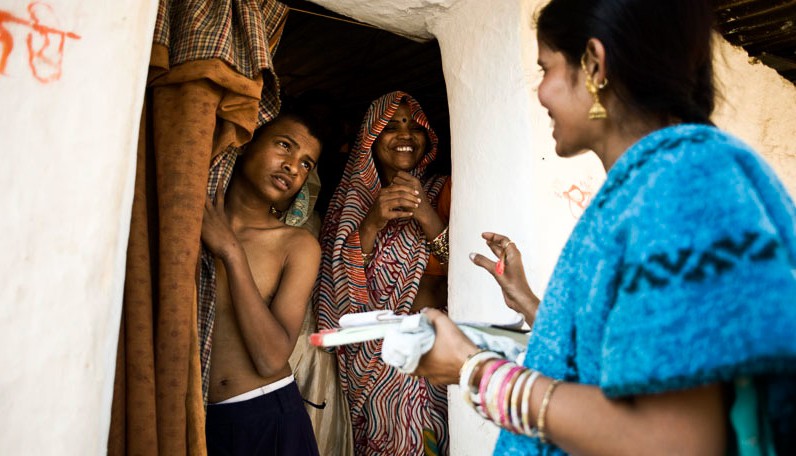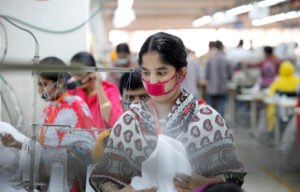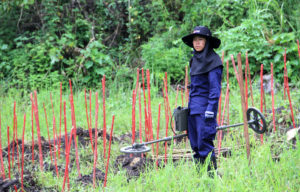
UN: Now is the time to defeat tuberculosis
A sustained campaign has saved millions of people from tuberculosis. We may now be on the path to finally rid the world of this deadly disease.
Share
Key facts
- Tuberculosis is a highly contagious bacterial disease, which comminly spreads through the air when sick people cough or spit on the ground.
- The bacteria often stay dormant in the body for many years without causing symptoms, and without infecting others.
- A third of the world’s population is currently infected by tuberculosis, but only 10-15 percent of infected people develop the active form of the disease.
- Those with weakened immune systems are especially at risk of falling ill with tuberculosis. HIV positive people are at high risk, but also smokers, diabetics and those who drink lots of alcohol are more vulnerable.
- When tuberculosis turns active, the symptoms are often chest pains and a bloody cough, as the bacteria begin to destroy lung tissue. This is typically accompanied by weakness, weight loss, fever and night sweats.
- Without treatment, 70 percent of those who develop active tuberculosis will die within 10 years.
- Given the right treatment, there’s a 95 percent chance of survival.
Other categories
Mankind has been struggling with the infectious disease tuberculosis since ancient times. It primarily infects and destroys lung tissue, but can also spread to other organs of the body, and can even destroy the bones. Once a widespread illness in Europe, most of the EU is now nearly free from tuberculosis, thanks to robust health systems and the invention of penicillin in the middle of the twentieth century. But tuberculosis remains a real threat in many developing countries. The disease was spreading rapidly throughout the nineties, and in 2002, a new person was infected every second. 2013 saw one and a half million people die from tuberculosis, making it one of the diseases that kill the most adult people, second only to aids.
Millions of lives saved
According to the World Health Organization (WHO), it is completely unacceptable that so many people continue to die from a disease that is reasonably easy to cure. A regular treatment against tuberculosis, including medicine and medical attention, takes around six months and costs the equivalent of about 412 euros in most low-income countries. The cost can be even lower – in Bangladesh the price is down to 67 euros. But even this may still be too much for people who live in extreme poverty, with an income of less than 1.15 euros a day.
In the future, tuberculosis must be completely eradicated, says WHO. In 1993, the organization declared the tuberculosis pandemic a global emergency, and it now seems the international effort against the disease is starting to take effect. Tuberculosis numbers have peaked and are starting to slowly reverse.
New infections are decreasing by 1.5 percent each year, and 37 million lives have been saved from 2000 to 2013, thanks to more effective diagnostics and treatment. This means that the world has reached the United Nations’s first goal of beginning to reverse tuberculosis by 2015. But there is still a long way to go before we reach a world free of the disease, and the progress is still too slow, the WHO warns.
Ambitious plan
There is reason to believe that the campaign to eliminate tuberculosis will gain speed in the coming years. In 2014, the UN agreed on a plan to bring down numbers of deaths by 95 percent before 2035, while numbers of infected people must be decreased by 90 percent. Meanwhile, no family should suffers catastrophic costs due to the disease. These goals will pave the way for the final push to eradicate tuberculosis completely before 2050.
While these are ambitious goals, it seems many nations of the world are backing their words with action. According to the WHO, there has been a ‘substantial growth in funding for tuberculosis prevention, diagnosis and treatment since 2002’, though it also warns that an annual gap of two billion dollars still needs to be filled to fully finance the plan.
The money must be found now, according to the WHO. It’s becoming very urgent to stop tuberculosis, as the bacteria are now rapidly developing resistance against the available medicines. This is partly due to the long treatment times necessary to fully cure a patient.
Race against resistance
If the patient stops the treatment course early, the naturally most resistant germs survive and reproduce. The patient falls ill again, and this time, the medicine does not work as well as the previous time. As this pattern repeats, the bacteria gradually become more and more immune to medicine, and the disease becomes more difficult to treat. For this reason, the proper way to treat tuberculosis is by making sure the patient stays on a combination of antibiotics for a long time, until all bacteria are surely gone.
Advances in technology have made it possible to diagnose drug-resistant tuberculosis in just a few days, rather than weeks. And using special drugs, it’s still possible to treat most forms of resistant tuberculosis, but this treatment is a form of chemotherapy that takes two years and often costs a hundred times more than the regular antibiotics.
Hope remains to treat even the most resistant bacteria, that cannot be killed off by any existing antibiotics. Ten new drugs are currently in late-stage clinical trials, and the latest two years, two new medicines have been approved for treating highly resistant strains of the tuberculosis bacteria. In addition, 15 possible vaccine candidates are currently being tested.







